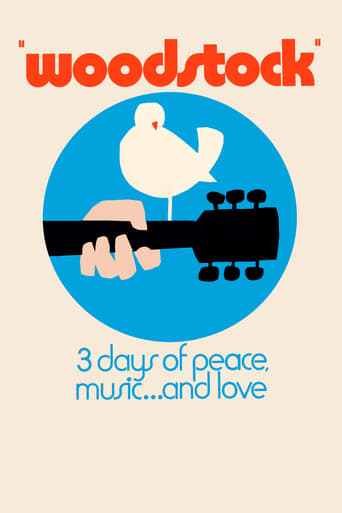
The Woodstock music festival that took place in August 1969, near Bethel, New York, was a monumental countercultural event and the standard that all subsequent music festivals strive to achieve. There were 44 acts performing at the festival, which resulted in some of the most iconic performances of modern music. Michael Wadleigh had a feeling that the upcoming festival had a chance at being something special, and he descended onto the event with a team of 16 cameras and top of the line equipment. Today his resultant movie is regarded as the quintessential concert documentary.
Previous to Woodstock, filmed rock concerts were just visual recordings of performances. Wadleigh created a movie that was only 60% performance, with the other 40% documenting the production of the event, and of course the very special audience who attended. Close to half a million people attended the festival. The vast majority not having purchased a ticket. It was a mass of young disfranchised, intelligent young people. To the immense credit of his movie, Wadleigh succeeded in transposing what it may have been like to be part of what Abbie Hoffman called, “The Woodstock Nation”. The movie is chock full of good will and optimism. It helps that most of the attendees of the festival are shown to be extremely likeable.
In addition, Wadleigh also makes a commendable effort in showing the countless people involved in supporting the event from the surrounding communities, authorities, and even the military. While most of the townsfolks were initially fearful of this mass representation to the flower-power generation marching into their territory, the movie also shows farmers helping to feed the crowd and an extremely kind, friendly local police force. Even the army, the ultimate enemy of the 60’s protest movement, use their helicopters to bring food, medicine and clothing to the crowd. The ultimate message being freedom, love and the ability to have harmless fun.
The filming of Woodstock would have been a straight forward documentation of a flower-power convention if it wasn’t for the brilliant musical performance captured on film. There are many highlights, and I want to highlight the ones that stood out for me. Many people may not realize that a large majority of the acts performing at Woodstock were not even rock bands. There were quite a few folk performers giving quiet and sometimes powerful performances. Joan Baez gives a pure vocal version of the gospel classic, “Swing Low, Sweet Chariot”, that silences 400,000 people with just her angelic voice. On the other side of the fence the British rebel group, “The Who”, rock the stage with force, causing the huge throng to swing wildly in unison to their thundering beat. Joe Cocker has an extremely personalized version of his hit song, “With a little help from my friends”, that sets the standards to Cockers very personal style of performing. The camera gets very close to Cocker, and it amazed me as to how he could lose himself in the song while being surrounded by almost half a million people. The last performance of the movie is also the last performance of the festival and the most memorable. This is the immortal Jimmie Hendrix performing magic with his guitar that includes an eclectic emotional instrumental version of the “Star Spangled Banner” that is timeless as well as unforgettable.
In filming these performances, Wadleigh succeeds in relaying an intimacy with the performers that allowed me to feel close to them, while at the same time not losing touch with the surroundings. Those surrounding are over 400,000 fans screaming their joy to not only the music, but also the state of mind. Wadleigh uses a triple screen effect to relay the togetherness of the musicians playing. An example is the drum solo played by the drummer from Santana’s band. We first see his performance as part of a three-part view of other members of the band (including Santana and his guitar), before the entire screen is filled with his drumming, that emphasizes the beautiful power of the solo. When Crosby, Stills & Nash take the stage they tell the immense crowd that Woodstock is only their 2nd ever live performance and that they are scared out of their minds by the crowd. They then go on and give a killer performance of, “Wooden Ships”. It is this combination of closeness and grandeur that makes the filmed performances so memorable.
The Woodstock generation, or nation, was born out of anger and protest, and in the summer of 1969, within this three-day festival, those protests transformed into a message of love. With his documentary of the event, Wadleigh succeeds in successfully evoking this message for generations to come. It is a time capsule movie that is timeless.

